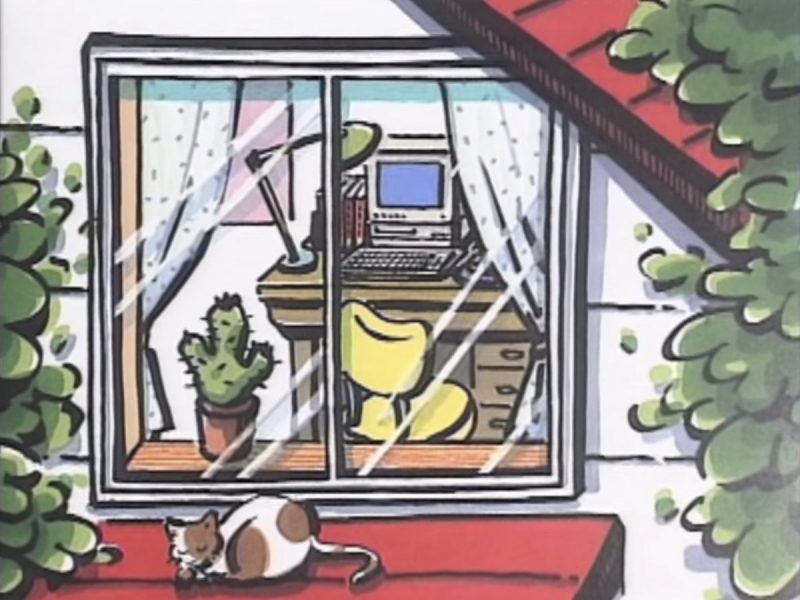There is a game called To the Moon which ever since its discovery, has stuck close to my heart. I love the whole Freebird Games main series, thus far. I like heartfelt story-focused games, even if they don’t have expansive gameplay. I care more about how the story affects me–and, man, Kan Gao knows how to make me feel emotions. I want to put this first paragraph, discussing To the Moon to be spoiler free, but I assure you, to get into the crux of what I want to discuss, spoilers will abound. I always encourage people curious about a game to play it before reading spoilers about it.
Fortunately, To the Moon is not a difficult game, so it is accessible to mostly everyone. It doesn’t have voice acting, so it requires reading, which may be tough for someone with the likes of dyslexia or something, but generally, it is accessible to many, many people. It is full of charm and has beautiful music by Kan Gao and Laura Shigihara.
From here on out, spoilers abound. If you want to experience the game, personally, play it, then come back. It is inexpensive, and absolutely worth it.
So What Is the Story?
I seriously implore you to have experienced it, yourself. However, if you don’t want to play it, and even a Let’s Play is not in the cards for you, I’ll run through a rough-and-dirty of the story.
To the Moon’s story focuses on two separate stories, one outer story, focusing on Neil and Eva, and their interaction with the caretakers of the other focus, Johnny. Neil and Eva work for a company called Sigmund Corp. Sigmund Corp. is a technologically focused corporation who created a process by which their staff can enter the creator’s subconscious, and attempt to adjust parts of the mind to generate a final, hopefully happy, memory for those not long for this world.
The problem is, the wish of Johnny is solely that he wants to go to the moon. He doesn’t put any context into why he wants to, or what he expects. As such, there is very little for the two to work with, when it comes to setting the process into motion. It requires a specific level of suspension of disbelief, as it were, by the party involved to initiate the outcomes they wish with any level of believably by the passing mind, and going to the moon isn’t something one can just suddenly shoehorn into the last five minutes of their life.
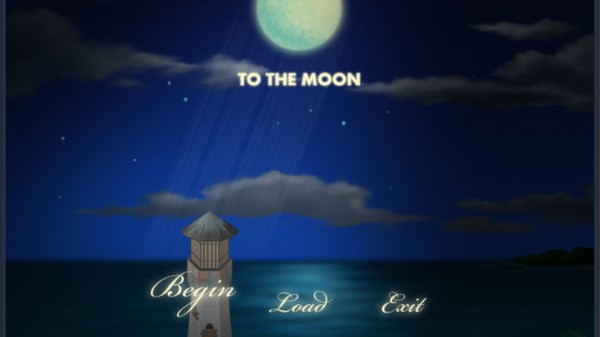
Everything you read above is mostly within the first few minutes of To the Moon, and a decent final primer before I step into true spoiler territories.
A Tale For Two
Johnny is willing to let the two go through his memories to form a proper context for him to get to the moon, but the two find that there are things that simply seem off about his past, and they can’t tell what, or why. They step outside the program at a few points to interact with the caretaker and her children–seemingly Johnny’s only kin. The only ones who seem to know who he is. The children seem familiar with a (beautiful) piano piece and there are origami rabbits… more than one would consider reasonable. Other than that, the outside world doesn’t yield much.
Here I will take a slight digression from the plot to discuss one or two things that have been considered critical points of the game by some I have talked to: it does railroad, to some extent. It is essentially a visual novel designed in RPGMaker. While I can see that being a sticking point for a person who plays games of various styles, To the Moon isn’t written to be the most difficult game, ever.
I only bring this up, because the area you can travel is small, and consists of a house, a path to a lighthouse, the car you arrived in (which hit a squirrel in the first scene after the most awful attempt to dodge you’ve ever seen) and… the insides of the house.
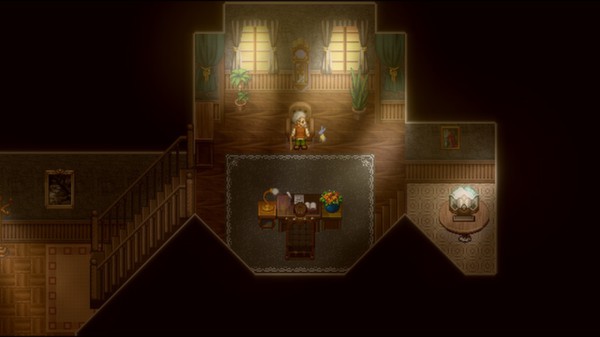
However, with this being a job, and people being confined to the site of such a job while doing it, I only find this a break from realism in that you could hypothetically pass the boundaries of the map, but it wouldn’t be reasonable in most circumstances. I feel for a small narrative story with a team of maybe a dozen people, this is acceptable area to cover, especially with the charm and emotion of the writing.
The majority of the adventure, as one would reasonably expect, takes place in Johnny’s mind. Any confines to motion are reasonably implied to be the realm of Johnny’s memory in any situation. The story unfolds as Eva and Neil try to figure out what drives his desire for going to the moon, and steer the mind in the direction of believing how and why Johnny would finally get to the moon.
As the story unfolds, moving back through memories, a lot of the internal story, that of Johnny’s memories, focuses on a girl named River. One can very heavily infer that River is on the spectrum, and has some specific things she values. She seems to care dearly for the nearby lighthouse, she cares about a platypus plush that seems to follow through the memories, and the story of The Emperor’s New Clothes seems significant to her.
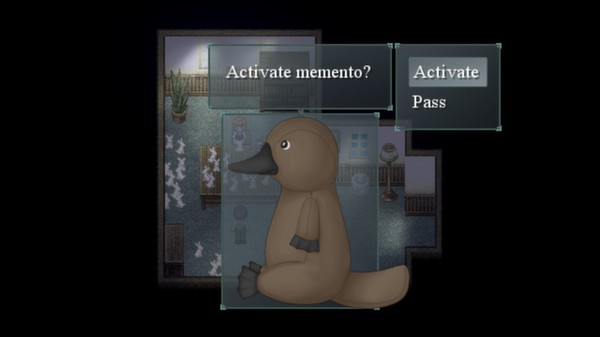
I actually give some level of a book report connection to why River cares for The Emperor’s New Clothes in my playthrough of the series. The idea of pretending to be something you’re not, social pressure to conform and denying the reality of the situation in life is relevant to the plot of the game.
It is no surprise, since earlier examples show she wants to be normal, something she isn’t. She wants to fit in and conform to the crowd, despite not being wired in such a fashion. It is, ironically, the things that make her different that are shown in what early memories Eva and Neil delve through.
It is also mentioned through the memories that Johnny seems to love the Animorphs series. This becomes an underlying plot topic that follows throughout, and while in my video I don’t do a book report on how it’s relevant, I posit that it is the inverse of The Emperor’s New Clothes logic. Johnny wants nothing more than to be unique, and different. This ties back to parts that develop, later, in the story. Animorphs are special and, if I recall, try to keep their uniqueness a secret, but they have a special value shared between their friends, at the very least.
Do You Like the Name Anya?
Johnny and River’s story goes further back, addressing young adulthood–in reverse chronological order, due to the nature of the game. Their honeymoon is by and in the lighthouse (where they dance, and it is both clumsy and adorable) they seem drawn to, throughout the story. There is a hint they might have a child, as River asks about naming someone Anya. There is the wedding. There, prior, is a rabbit dead in the road, which Neil connects to the paper rabbits, though he finds it silly.
Equally silly is the horseback riding scene, which is further showing their romantic connections as young adults, but also gives an example of how goofy and absurd Neil is, and how (generally) straight-man Eva is. Based on the lovey-dovey things and occasional dark topic implications of Johnny nearing the end of his life, it is a reprieve from the weight of the story that Neil gets more or less kidnapped by a horse Eva told him not to mess with. It also has good music while you ride the horse.
The next (previous) scene is where Johnny and River discover that River has a mental condition that has been untreated since childhood, and they are recommended equine therapy (hence the horse scene.) We also learn River hates ticking clocks when Johnny asks the nurse to silence the one on the wall. This ties back to the latest childhood memory Johnny has where he missed River at a movie, only to realize she was there, and doesn’t mind, because they both saw it together, even if her interpretation of “together” is different from Johnny’s.

Lighthouses
This links further back to what appears to be Johnny’s introduction to River’s platypus toy. He is trying to ask River out, and she doesn’t respond how he expects, but does accept. At this time she is reading a book about lighthouses. Preceding this is where Johnny discusses his interest in River, seeming as though his primary interest in her is that she is different than others. His friend Nicholas calls him out for such a peculiar and selfish belief. Neil and Eva draw this to when she begins making rabbits.
Preceding this is a scene where Johnny heads to school and his mother calls him Joey, and seems emotional. The two refer back to when Johnny states his mom calls him Joey after his grandfather. And… Then…Nothing.
Not as in the story ends, but rather, they discover nothing in the preceding memory. They appear on a white background with only the soccer ball memento, and a void separating them from some houses. Eva states that something is separating them from the memory. They tie it to machinery issues. Getting him to the moon is going to take some time, dealing with technical issues. Time they may not have.
This all makes up only act one. While it may not all seem significant upon first playthrough, it very much is. The smallest points likely are the books’ meanings. However, they do have a specific reason in which they are chosen.
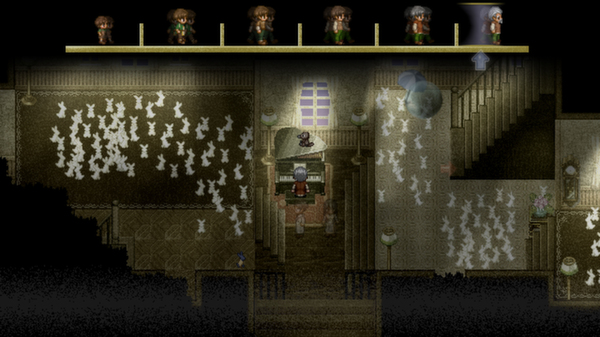
Nothing’s Changed
Neil and Eva return to Johnny’s latest memory and discuss the issues with him, attempting to discuss why it doesn’t work, and giving the memory an existential crisis of sorts. It also paints how much the duo care about the situation, and what they see as real, important, and meaningful. They, then, try to run the process and just make things happen with what they have–to no avail. Nothing has changed whatsoever. Nothing seems to have shifted at all, which Eva and Neil point out is very strange.
They believe it may need some stimulation to activate, so they run through old memories and try everything to convince him he wants to go to the moon. They run into auditoriums talking about going to the moon. They change the movie that’s playing to one about going to the moon. Nothing seems to change anything. (Also, this is really goofy.)
Eva waxes analytic about the situation and believes River is relevant to everything, and she doesn’t know why. She considers that if anything is preventing the memory from passing through, it has to do with River. Then, the bombshell.

Hidden Medical Records
Neil is on the phone while Eva discusses things with Lily, the caregiver. One can also explore outside, and note that the roadkill has a particularly strong odor, keeping Eva inside. Lily gives gratitude in Johnny’s stead, and Neil finishes on the phone. Neil addresses something of which Neil and Eva were not informed that may help them get Johnny to the moon.
When Johnny was young, he was administered beta blockers–which Eva finds very strange, because he had no heart condition. At this point, Neil suggests that the side-effect of memory issues may not have been a side-effect, but rather the reason for administration.
They have a way to get around the beta blockers, but they need a tool, something from the preceding memory, to trigger the bridge. The issue is, Johnny is unconscious, and they don’t know what would be the issue. Until–Neil leaves the house, and realizes the odor. It sets off that he recalls the smell of roadkill in the last memory, and that smell is the strongest sense for triggering memory.
After Neil makes Eva get the roadkill he hit with the car, they spring their plan into action.
And it works.
There is an aside to a throughline of Neil’s issues with painkiller addiction, here, which is only relevant to the overarching in the Freebird Games series as a whole. It doesn’t quite play into this story, alone.
A Whiff of a Memory
Act three opens without pulling any punches. They administer a scent of roadkill to Johnny, and immediately things go wrong. His body destabilizes, and Eva suspects that things could cause actual harm to them if they don’t leave, so she insists Neil leaves, and Neil refuses, saying she’s just being a hero trying to stay in the memory if he crashes. She says if they both leave, the memory will reset and nothing will have been gained. Things eventually do stabilize, and they return to the memories.
At this point, Eva points something out–that something was strange about Johnny’s room.

However, she shrugs it off to get back to the job at hand, hoping she’s wrong. Things become strange with the memory, as more than one Johnny appears to be wandering around. Eva and Neil explore, as Johnny’s mother finishes up work on their car, before backing out to do… something. And then.
Johnny’s room had a bunk bed. There may be plenty of reasons someone might speculate, but combined with the multiple Johnnies running around–that weren’t multiple Johnnies, they were two siblings. The memory returns to the moment when Johnny’s mother backed over her own son on accident. Her son Joey. Her son who passed away that day.
This is why he was on beta blockers. His mother was not, meaning she had long-term struggles with this, where she refers to Johnny as Joey, likely among other issues.
Then, we return to… less extreme memories, if only just: Johnny and Joey in their room talking. Joey is trying to get Johnny into Animorphs, and talking about how one day he’ll be a great writer. Johnny seems bothered by “the other day” and a train, and says their mother always favored Joey. Then they go to confuse neighbors–in the rain.

As the memories travel backward, we reach a carnival or festival of some sort with a (too-small, lampshaded) Ferris wheel, and Whac-a-mole. Johnny is upset that he didn’t get to win the train, because Joey went first. He doesn’t like his prize. It turns out, originally, Johnny also didn’t like the pickled olives repeatedly mentioned, but rather Joey did, before the tragedy.
Johnny runs off into the woods, and Eva and Neil follow him, leading to a big clarifying moment that I find completely adorable. Johnny looks over a cliffside at stars, which amaze him. He decides to sit on a log and watch, when she shows up: River. She states Johnny is in her spot, and he invites her to come along. They stargaze.
Johnny tries to make small talk, and realizes it doesn’t work the way he expects. She refuses to say her name at first, and John says he is annoyed that everyone (even in India, apparently) has the name John. They talk about stars, and about adults making things up, like the Easter Bunny–which prompts them to try and make a bunny out of the constellations.

John asks River what she thinks stars are, and she states that she believes they’re lighthouses. She believes they are separated so far, but that they want to communicate, so they shine their lights to each other. River asks what is in Johnny’s bag–the prize. At this point, Johnny plays off that it is silly, and River states she didn’t win at Whac-a-mole because she is too clumsy. Johnny’s mom calls, and he gives the plush to River, when she wishes she could have won one.
They make a plan to meet each other in the same place, next year, in the same place, at the same time. River asks what will happen if they forget. Johnny says they can “always regroup on the moon…Right on the Rabbit’s tummy.” He also leaves her his hackey sack, encouraging her that it will make her less clumsy. Clearly this has a profound effect on her, and the fact that Johnny misses their rendezvous ripples through her.
Eva says that it’s time to do what is necessary to sent Johnny to the moon, and Neil realizes what that might mean. Then comes one of my favorite segments, which I think would look amazing in a To the Moon movie. Neil chases Eva down through one of Johnny’s memories. Neil objects, because that means removing River, which he states would go against what Johnny wants. Eva states they don’t have time, that she is willing to risk what happens next, and he believes in her.
To the Moon
She then, to buy some time, distorts the memories to trap Neil in an endless loop with mixed segments of various memories, as well as spikes, flying globes, and zombie versions of herself.

This buys her enough time to do what she knows must be done: prevent John from asking River out on the stair steps. Combined with their other work, this is enough to set her plan of getting Johnny to the moon into action. Neil is noticeably upset, and tries to reset the memories, but Eva disabled his controls, and Eva insists Neil trust her.
Things play out via the new line of memories, with River gone, and… Joey still alive. Then comes the song Laura Shigihara sings on, for this game, and it is… intense. Johnny doesn’t meet River again. He wants to be an astronaut. He rides past the horse stables. He rides past the house and wedding spot. He studies and applies to colleges, and eventually, applies to work at NASA. While at his brother’s book signing, he gets a call from NASA–where control returns.
We see Johnny getting a tour of a construction of how NASA looks–at least what’s relevant. He views several locations, and we see the book his brother wrote was called To the Moon. The tour continues and Neil asks if this is what NASA looks like. Eva says it is likely how Johnny thinks it looks, Neil responds that it is “a wiki of of existing facts tainted by personal fairytales.” Eva apologizes, because she thought something would happen, just before it does.
Johnny reaches the break room, and is introduced to David, the mission specialist, and then things flicker. Eva and Neil have a small panic, before… River comes into the room, as the other new recruit. Neil asks how this could happen if Eva deleted River. Eva emphasizes that she never deleted River, only moved her, and what River does is up to ‘her’–as painted by Johnny’s thoughts and memories.
Then the ending plays, with Johnny holding hands with River as their rocket launches, taking them to the moon, as Johnny’s heartbeat slows, before stopping completely.
Every person I’ve ever talked to who has played the game has declared the game as sad. It is bittersweet, absolutely, but even as cynical as my heart is, I find To the Moon to have a very optimistic ending.

Everyone Deserves a Second Chance
And yes I cried. I cried on stream. It is emotionally powerful, as a game. However, I didn’t cry in sadness, even before giving it all this thought. I always thought this was a beautiful, bittersweet, but still uplifting story. To the Moon is telling a real story in a fictitious manner. It goes through the complicated, messy, sad, encouraging, stressful life of a single man–an imperfect man–and gives him a chance to find a happy ending.
The struggles in his life are partly out of his control, and the ripples through River hurt her, and she likely doesn’t know why he can’t connect the dots, but still tries to get there. Johnny is feeling guilt for a reason he is chemically forbidden from understanding. There is tragedy to the story, as there is in any person’s life.
River tries so hard to demonstrate the rabbit in the moon, to remind Johnny that the platypus plush was a gift from him. That he missed their meeting stargazing due to the beta blockers drastically affecting his memory. In the end, while Johnny doesn’t know why he needs to make it to the moon, his heart tells him that it is his true desire.
He gets that second chance to meet River on the moon. It is a meaningful idea, getting a second chance. It is emotionally impactful, seeing everything that happened, and all the tragic miscommunication, but in the end, for everyone to whom it matters: he did it. He took River to the moon, and on the approach, hand in hand, they went wherever we all go, next.

The message of the story seems commonly misconstrued as sad when I talk with others, and it baffles me. There are absolutely sad parts in To the Moon, but the story itself is highly uplifting. In the end, Neil and Eva are able to give an old man the ending he had hoped for, and everything was far better than reality could have given him.
I certainly don’t believe every person I have discussed the game with believes that something making you cry means it is sad, that seems unlikely. However, if it is a thing that needs some clarification, I feel like it is more that crying is an instinct to overwhelming. When the mind is so full of emotion that it has no other release, crying is the result.
I, personally, found To the Moon highly uplifting and inspiring. It tells a very thorough story, and ends with a pure sweetness and sense of love I only wish one day to have. It is not a sad story, but rather a happy ending to a real story.
Other Things of Note
The biggest thing that may be lost in translation for western players of this game is the idea of a rabbit in the moon. This is not out of nowhere. In the west we have the “Man in the Moon,” but in Eastern Asia, they have a “Rabbit in the Moon” (as an aside, this is also how Usagi Tsukino gets her name, coming from “Tuski no usagi” meaning “moon rabbit.”)
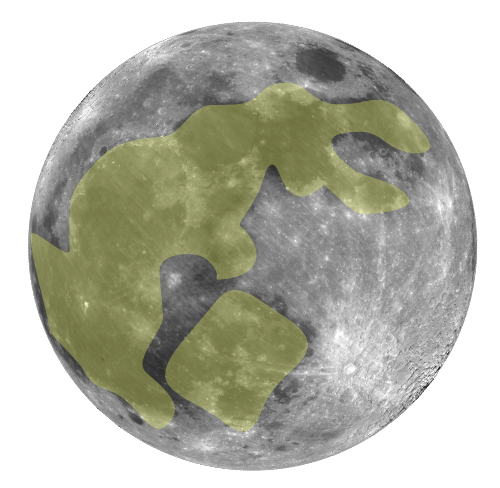
There is far more to the world of To the Moon, as well. There are two full sequels (Finding Paradise, and Impostor Factory,) one side-sequel (A Bird Story) and two free side-stories (Christmas Minisodes 1 and 2) focusing on Neil and Eva’s work. The main sequels tell stories such as this, using different patients, the free side-stories take place at the holidays–and focus mostly on the actual business the two work for, and the side-sequel tells a story in… a unique way I don’t want to spoil.
The entirety of the To the Moon series is absolutely worth purchasing, and I encourage it for anyone looking for emotionally grasping stories.
Laura Shigihara has also done a phenomenal game in this vein of her own, called Rakuen. Once again, I don’t want to spoil the setup, but the story it tells is very powerful, and I encourage anyone who enjoys this style of game to get it, but be prepared, all of these hit straight in the heart.
I really hope that my analysis of the story and thoughts on the plot encourage more people to look at the story as uplifting and a source of hope, not grief, because I personally don’t believe that Kan Gao wanted to write a story that is seen as ultimately sad, here.
And, as I said in my article on oxytocin, be sure to tell those you care about that you love them, tomorrow is never a promise.—Tails_155
If you want my input on another topic, I also recently did a review on the new Legends of the Hidden Temple!
